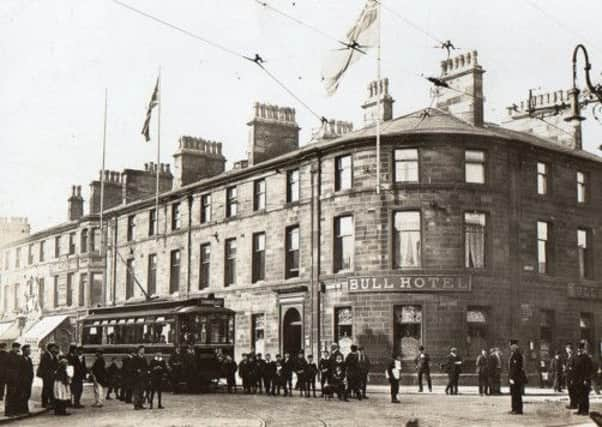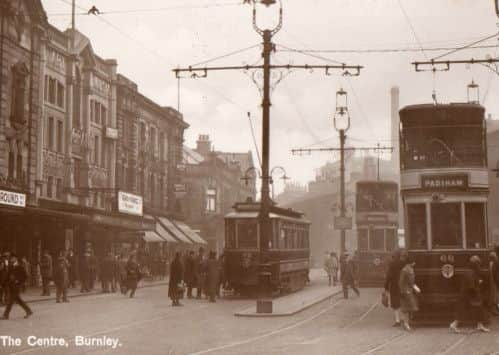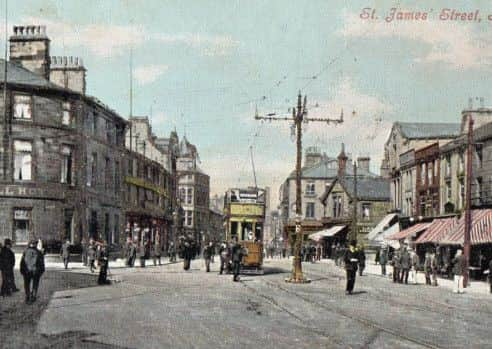Population of Burnley has been halved


As you will know, Dominic and I produce, on a weekly basis, three articles for the Retro supplement to the mid-week edition. Last Tuesday, Dominic, taking his lead from a 1951 edition of the paper, wrote about the changes in the population in the town.
His intention was a laudable one in that he wanted to show Burnley’s population had not fallen as much as it is commonly thought. He made the claim, quoting from the Census Returns, that in 1951 the population of the town was 84,950. I have every reason to believe this figure is correct. What was amiss was that the figure Dominic quoted for 2011, although it was accurate, did not compare like with like.
Advertisement
Hide AdAdvertisement
Hide AdAccording to Dominic the figure for 2011 is 87,057 which is an increase on the figure for 60 years before. He adds the figure for 2011 was 2,500 less than that for 2001, a fall of 3%. The population of Burnley, therefore, is continuing to fall, so how is it that the figure is not all that different for that published for 1951?


I will address that question, but first it might be useful to let you know why it is important to have accurate population figures. Population statistics are not everyone’s cup of tea but, when they are published, they are pored over by an army of academics, statisticians, civil servants and local government officers.
With regard to the latter, and before I was elected to the council, I had some correspondence with an officer of Burnley Council, now retired, about the Burnley Census figures for 1981 and 1991. I was concerned the figures, as published, might not be accurate. I had used them in something I had written on the decline of the Lancashire textile industry and I had hinted the Burnley figures might be inflated as they did not conform to the model prepared, I think, by the Government Statistical Office.
It had been useful to me to be able to claim that, over a period of time, decline in population in Burnley had been greater than previously thought. However, an officer of the council contacted me and said I was playing a “dangerous game” as Burnley’s Government (Rate) Support Grant was, in part, based on the numbers of people living in the borough. There were other factors, like guidelines on social deprivation, but the bottom line, so to speak, was that it benefited Burnley Council to have the highest possible population figure so this particular element could be used to get the maximum (Rate) Support Grant which accounted, in those days, for 80% of the funds of the council.
Advertisement
Hide AdAdvertisement
Hide AdAt the time, officials from Burnley were thinking of challenging the figures produced by the Census. Their view was that the published figures did not take account of a considerable number of residents who had not filled in their Census Returns. My opinion was that problems such as this were recognised and measures had been taken to rectify the situation. It was, in fact, with these measures, that I had my problem. I thought that, in the case of Burnley, these figures had been over estimated but I will not bother you with the reasons for my concerns here.


Since the introduction of the Council Tax the name for what was the Rate Support Grant has been changed but it still is the most important element in council funding. From this you can see why officers of the council were concerned about the population figure. Similarly, funding for the NHS is dependent, to a large extent, on population figures though, as we have seen over the last few days, the total of people living in any one area, which is the primary measure, is not the only figure that interests the Government. It is having discussions, at the moment, about funding where the emphasis will be determined by the age of residents in areas served by Clinical Commissioning Groups (CCG). The effect, if implemented, it has been warned, will be that the poorest parts of England (which includes north east Lancashire) will have their health funding cut while affluent areas will benefit.
In Sunderland, for example, where a woman’s healthy life expectancy is only 58, NHS funding would be cut per person by £146, a decline of 11%. Compare this with the CCG in South Hampshire, where a healthy life expectancy for a woman is 68. Here NHS funding would increase by £164 per person under the new formula, a 14% increase, exacerbating the already existing North-South Health Funding divide.
I hope, from this, you can see just how important population figures can be, but how they are arrived at is another matter. Dominic, in his article, concludes by saying it is his hope investment in education and training will result in the town retaining more of its young people. This, of course, is one of the reasons for investment, at almost all levels in education in Burnley.
Advertisement
Hide AdAdvertisement
Hide AdThough more needs to be done for our younger children it is good we now have two university campuses, a new College of Further Education, a UTC and new high schools all of which have top notch facilities. It might be that these investments have been made, to use a manufacturing term, “just in time”.
The anonymous writer of an article in the “Economist”, recently, has made the case for allowing some towns, Burnley among them, to die. The article puts it this way, “Some towns cannot be preserved; save their inhabitants instead”. The writer suggests residents should be helped to find, and commute or move to, better jobs elsewhere.
This reminds me of something which happened many years ago. Here we get back to concern about Burnley’s falling population and the limited job opportunities of the past. The then Labour Council organised a delegation under the leadership of Alderman Tommy Gallagher. I interviewed him on several occasions and he told me the story of his delegation’s visit to Number 10 where they met the Prime Minister of the day, Harold Macmillan.
Mr Gallagher outlined the problems facing Burnley – the continuing decline in the textile industry, mining and heavy engineering and the lack of attractive manufacturing jobs. A pretty bleak picture must have been painted but the Prime Minister’s reaction was not to promise investment. Instead, “Supermac” reminded Tommy, and those with him, there were lots of abandoned villages in eastern England and the world had not come to an end. Alderman Gallagher replied we are not talking about a few dozen medieval peasants but a 100,000 in Burnley in the 20th Century!
Advertisement
Hide AdAdvertisement
Hide AdHe might have added that, in the 14th Century, when the abandonment of many of these villages, such as Wharram Percy in Yorkshire, took place, there were no mechanisms to improve employment opportunities. These were widely understood some 50 years ago when the Downing Street meeting took place.
From Macmillan’s point of view, he could see a declining town. It is now time to assess the extent to which that decline has taken place but, before we do so, we have to compare “like with like” which was Dominic’s understandable failing last Tuesday.
The Burnley of 2011 is a very different Burnley to that of 1951. From 1889 to 1974, Burnley was a County Borough and the figures for 1951 relate only to the area of the County Borough. This excluded Padiham, Hapton, Habergham Eaves, Briercliffe, Cliviger, Worsthorne, Ightenhill and Dunnockshaw whose populations were assessed separately. They were not included with the figures relating to Burnley until the 1981 Census.
To give you an idea of the population of Burnley, and its neighbours, I have chosen the Census of 1911 largely because it is close to the year in which Burnley, as a County Borough, achieved its highest population. This was determined by the Government’s Statistical Office and the year was 1915. However, in 1911, there were 106,322 people living in the town. The figures for the other places mentioned are; Padiham, 13,637; Hapton, 1,900; Habergham Eaves, the figures are included with Burnley but several hundred were excluded; Briercliffe, 3,042; Cliviger, 1,736; Worsthorne, 1,101, Ightenhill/Dunnockshaw are included elsewhere in the statistics.
Advertisement
Hide AdAdvertisement
Hide AdFrom the above, it can be seen there were about 128,300 in the area covered by the present area of the borough in 1911. This actually grew by another 10,000, or so, by 1915 but I should point out that, for the smallest townships, estimates have been included as it is difficult to extract the exact figures from the sources.
If we take the accepted figures for 1911, the numbers of people living in the old County Borough area, (the town of Burnley, not the borough) there has been a decline in population from 106,000 plus to about 56,000 today. This constitutes a remarkable fall in population of almost 50%. The present day figure of 87,057 includes all of the residents in all of the places listed above - a fall from 128,000-plus to 87,000-plus, a fall of 41,000 or about 33%.
Another way of looking at this is to take the figure given by Dominic for Burnley as it was in 1951, which is 84,950, and to work out how many people would there have been in the area covered by the present borough in that year. I estimate this figure would have been a little over 100,000. There had still been a decline from the peak of 1911/15 and, examining the figures, it can be seen that, generally, the fall in the population of the former County Borough area (the town of Burnley) is responsible for the decline.
All that said, one can only agree with the sentiment expressed by Dominic, that the fall in the Borough’s population can be arrested.
Advertisement
Hide AdAdvertisement
Hide AdIf it is, and every effort is being made to do so, we will hear nothing more of anonymous writers in right wing political magazines advocating that the Burnleys of this world are beyond help.
We know that it is not.